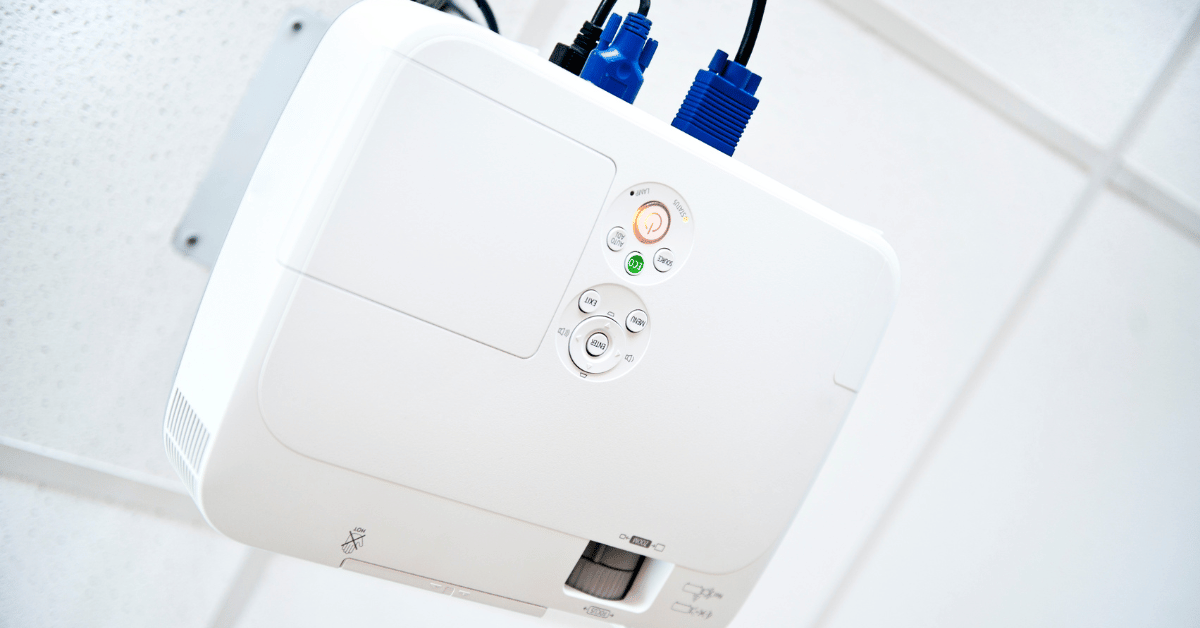Mounting a projector is an important step in setting up a home theater or presentation system. A properly mounted projector provides a stable image that is easy to adjust and delivers the best viewing experience. However, with so many options available, it can be difficult to decide which type of mount is right for your projector and space. In this guide, we’ll explore the best ways to mount a projector, including ceiling mounts and wall mounts. We’ll also discuss the key considerations to keep in mind when choosing a mount, so you can find the best solution for your needs.
What’s the Best Way to Mount Projector?
Mounting a projector can be a daunting task, especially if you’re not familiar with the different types of mounts available. There are a variety of mounting options, including ceiling mounts and wall mounts, each with their own benefits and drawbacks. In this guide, we’ll walk you through the best ways to mount a projector, and provide tips on choosing the right mount for your needs.
Ceiling Mounts
Ceiling mounts are a popular choice for mounting projectors in home theaters and conference rooms. They allow you to position the projector in a way that maximizes screen size while keeping it out of the way of foot traffic. Here are some key considerations when choosing a ceiling mount:
Projector Weight
When choosing a ceiling mount, it’s important to consider the weight of your projector. Make sure the mount you choose is rated to support the weight of your projector.
Adjustability
Ceiling mounts should be adjustable so that you can position the projector in the optimal location for your screen. Look for mounts that offer pitch, roll, and yaw adjustments to fine-tune the projector’s position.
Installation
Ceiling mounts typically require installation, which can be a DIY project or handled by a professional installer. Make sure to follow the manufacturer’s instructions carefully and take all necessary safety precautions.
Wall Mounts
Wall mounts are a great alternative to ceiling mounts, especially if you don’t have the ceiling space to mount your projector. Wall mounts also provide flexibility in terms of placement and are often easier to install than ceiling mounts. Here are some key considerations when choosing a wall mount:
Distance from Screen
When choosing a wall mount, consider the distance between the projector and the screen. Wall mounts should be adjustable so that you can position the projector at the right distance for your screen size.
Wall Material
The type of wall material you have will also impact the type of wall mount you need. For example, if you have a concrete wall, you’ll need a heavy-duty mount that can be securely fastened.
Installation
Wall mounts typically require installation, which can be a DIY project or handled by a professional installer. Make sure to follow the manufacturer’s instructions carefully and take all necessary safety precautions.
Other Considerations
In addition to the mount itself, there are some other considerations to keep in mind when mounting a projector:
Cable Management
Cable management is an important consideration when mounting a projector. Make sure to choose a mount that allows you to easily route cables and keep them organized.
Accessibility
Consider how accessible the projector will be once it’s mounted. You’ll want to be able to easily access the projector for maintenance or lamp replacement.
Screen Size
When mounting a projector, consider the screen size you want to achieve. Make sure to choose a mount that allows you to position the projector in the optimal location for your screen size.
What is the best way to position projector?
The best way to position a projector depends on a variety of factors, including the size and layout of the room, the size of the screen, and the location of other equipment such as speakers or furniture. Here are some general guidelines to consider when positioning a projector:
- Determine the optimal screen size: Measure the distance between where the projector will be located and the screen, and use a calculator or chart to determine the optimal screen size for that distance.
- Choose the right projector mount: Ceiling mounts and wall mounts are the most common types of mounts used for projectors. Choose a mount that is rated for the weight of your projector and offers adjustability to fine-tune the projector’s position.
- Position the projector perpendicular to the screen: The projector should be positioned perpendicular to the screen to avoid distortion and keystone effect. Use the projector’s vertical lens shift or keystone correction features to fine-tune the image.
- Avoid obstructions: Make sure that the projector is not obstructed by furniture, lighting fixtures, or other objects that could interfere with the projection.
- Consider ambient light: Ambient light can wash out the image projected by a projector. Consider using blackout curtains or shades to reduce ambient light in the room.
- Choose the right screen type: The type of screen you use can also impact the quality of the image. Choose a screen that is appropriate for your projector and room conditions.
By taking these factors into consideration, you can position your projector in the optimal location to achieve the best possible image quality for your home theater or presentation system.
Conclusion
In conclusion, the best way to position a projector depends on several factors such as the room size, screen size, and layout, the location of other equipment, and ambient light conditions. Choosing the right mount, positioning the projector perpendicular to the screen, and avoiding obstructions are some key considerations when positioning a projector. Additionally, the type of screen used can also impact the image quality. By considering these factors and fine-tuning the projector’s position, you can achieve the best possible image quality for your home theater or presentation system

